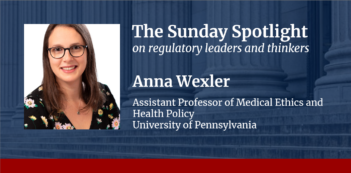
Scholars analyze the impact of ACA provisions on the gap between part-time and full-time workers’ health insurance coverage
Approximately 30 percent of the nearly 162 million employees in the United States work part-time. In addition to working fewer hours per year, these workers are less likely to enjoy employer-provided benefits, including health insurance coverage.
In a recent working paper, Katharine G. Abraham, a distinguished university professor at the University of Maryland, and Henry S. Farber, a Hughes-Rogers Professor of Economics at Princeton University, analyze the impact of the Affordable Care Act (ACA) on the gap between health insurance coverage for full-time versus part-time employees. Abraham and Farber investigate how ACA provisions influence employees’ access to health insurance, whether it is employer-provided, Medicaid, health exchange, or private coverage.
The ACA includes various provisions affecting health insurance coverage, but Abraham and Farber focus on five. First, one provision mandates that larger employers supply affordable health insurance to all full-time workers. Second, an ACA provision sets the age at which children can remain on their parent’s health insurance plan to 26 years old. Third, a provision expands Medicaid eligibility for individuals whose household income is below 138 percent of the federal poverty line. Fourth, a provision creates marketplaces where individuals can purchase health insurance, and, finally, the ACA requires all individuals to have health insurance.
Abraham and Farber tested hypotheses about the impact of each provision. They anticipated the first provision to increase the gap between full-time and part-time employees’ coverage because it only applies to full-time workers. For the other four provisions, however, Abraham and Farber expected them to shrink the gap.
Abraham and Farber relied on data from the 2001 through 2022 “Current Population Survey Annual Social and Economic Supplement,” a yearly report from the U.S. Census Bureau that asks individuals about their work experience and health insurance coverage during the previous calendar year. They analyzed individuals between age 20 and 64 and classified part-time employees as those working less than 30 hours a week.
The data have a few limitations because the “survey instrument and processing procedures” changed during the analysis period. The Census Bureau modified the questionnaire in 2014 in anticipation of the ACA’s implementation and introduced a new processing system in 2019 to “take full advantage of the richer information on coverage collected through the new survey instrument.” Abraham and Farber account for these changes by focusing on the data points between 2013 and 2021 and adjusting for changes caused by the new processing system.
As for the provision mandating employer coverage, the gap between full-time and part-time coverage increased from 32 percent in 2013 to 32.5 percent in 2021. Although Abraham and Farber suggest the mandate affected the increase, they also take into account that many part-time workers receive dependent coverage from another person’s employer-provided insurance.
Abraham and Farber explain that even though part-time workers make up a greater share of the total dependent coverage recipients, “the amount by which dependent coverage among part-timers exceeds that among full-timers is shrinking,” which means part-time workers are “losing out relative to full-time workers”.
Respecting the second provision, allowing children to remain on their parent’s coverage plans, Abraham and Farber did not come to a certain conclusion. Before the ACA, students were allowed to remain on their parent’s plans until the age of 23. Because young part-time workers are often students and young full-time workers are not, Abraham and Farber claim that the provision’s “net effects on the full-time/part-time coverage gap is … a priori uncertain.”
The third provision expanding Medicaid eligibility, however, led to a substantial increase in part-time workers’ health insurance coverage because part-time workers were more likely to receive Medicaid coverage than full-time workers. As a result of the Medicaid access provision, Abraham and Farber estimate that the gap between full-time and part-time coverage shrunk by nearly 5 percentage points between 2013 and 2021.
The fourth provision, introducing health insurance exchanges, had an impact on the gap as well.
Since the exchange’s creation in 2013, Abraham and Farber estimate the adjusted gap between exchange coverage for full-time and part-time workers has been negative 2.8 percent. They explain that this decrease illustrates that part-time workers use the health insurance exchanges more frequently, and thus that the provision made a “substantial contribution to closing the full-time–part-time coverage gap” overall.
Abraham and Farber also note that as more employees purchased health insurance at exchanges, they became less likely to purchase other private coverage. Despite this finding, the data still showed a substantial increase in private insurance purchases for part-time workers between 2013 and 2021. Full-time workers purchased more private insurance as well, but not to the same extent.
Concerning the final provision, Abraham and Farber did not find an impact from a health insurance mandate because the Tax Cuts and Jobs Act of 2017 waived the attached penalties. Due, in part, to this elimination, Abraham and Farber conclude the mandate’s impact on the part-time versus full-time coverage gap is unclear.
Overall, Abraham and Farber found that the source of health insurance coverage varies between part-time and full-time workers. Full-time employees are more likely to receive coverage from their employer, and part-time employees more often rely on dependent coverage or Medicaid, or purchase a plan at an insurance exchange. Although more full-time employees have coverage than part-time employees, Abraham and Farber found the gap between the two groups to be much smaller after the implementation of the ACA. They argue that the expansion of Medicaid contributed the most to this shrinkage, but the creation of the insurance exchanges did so as well.



